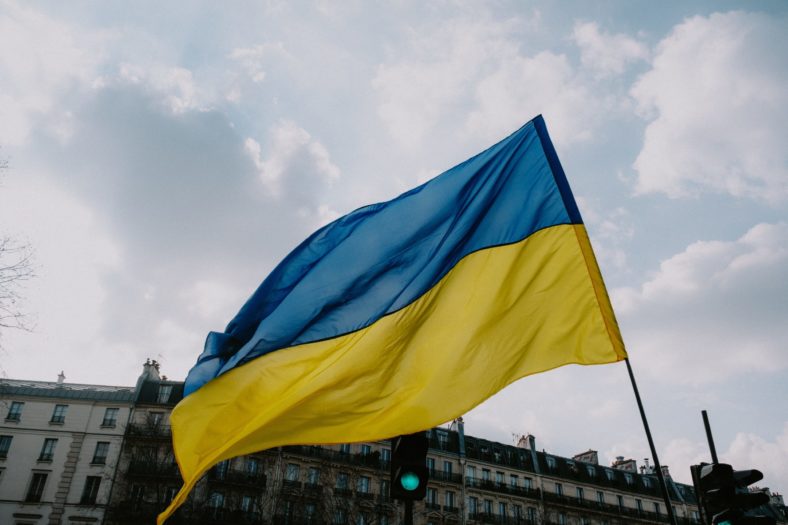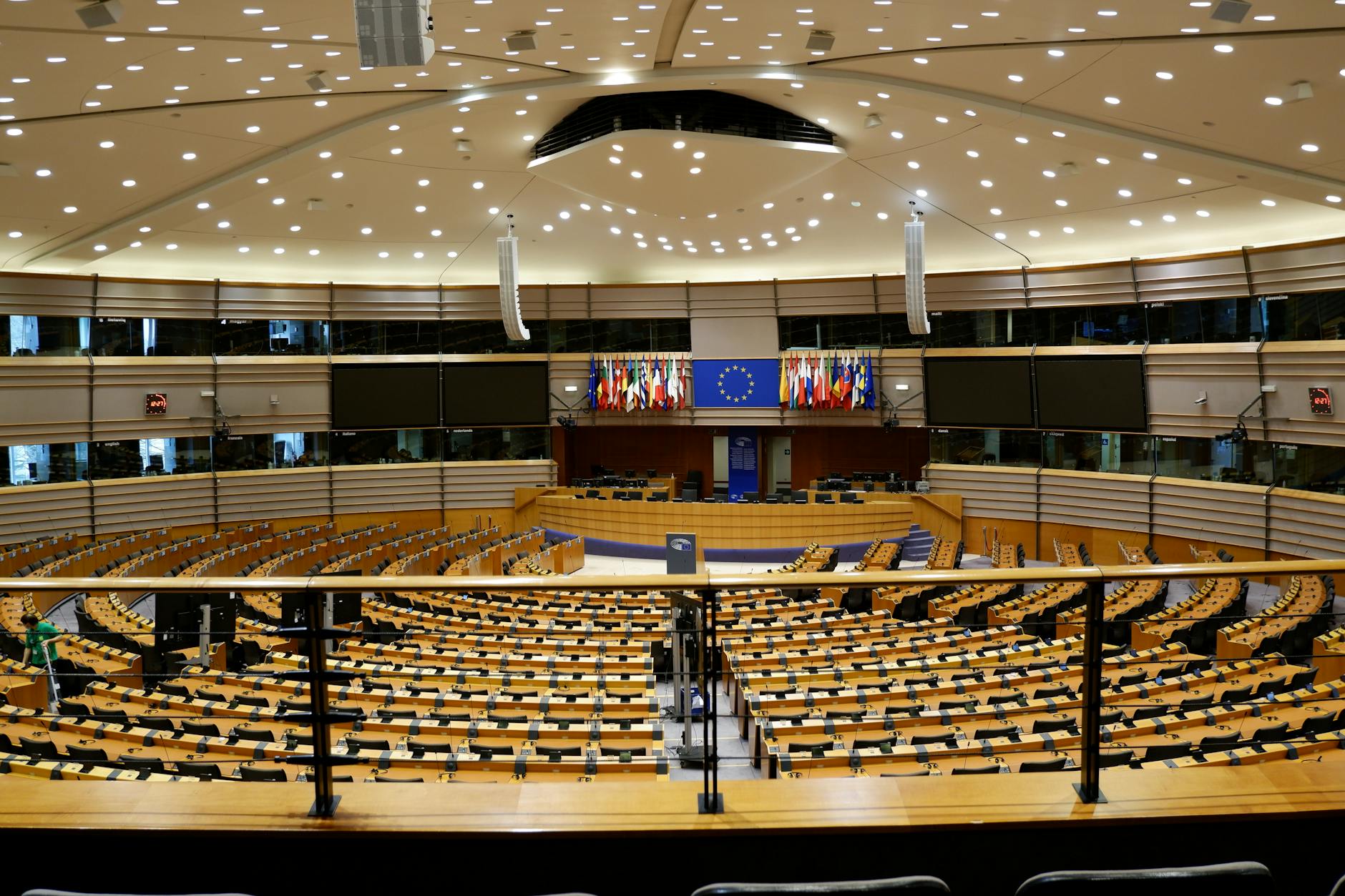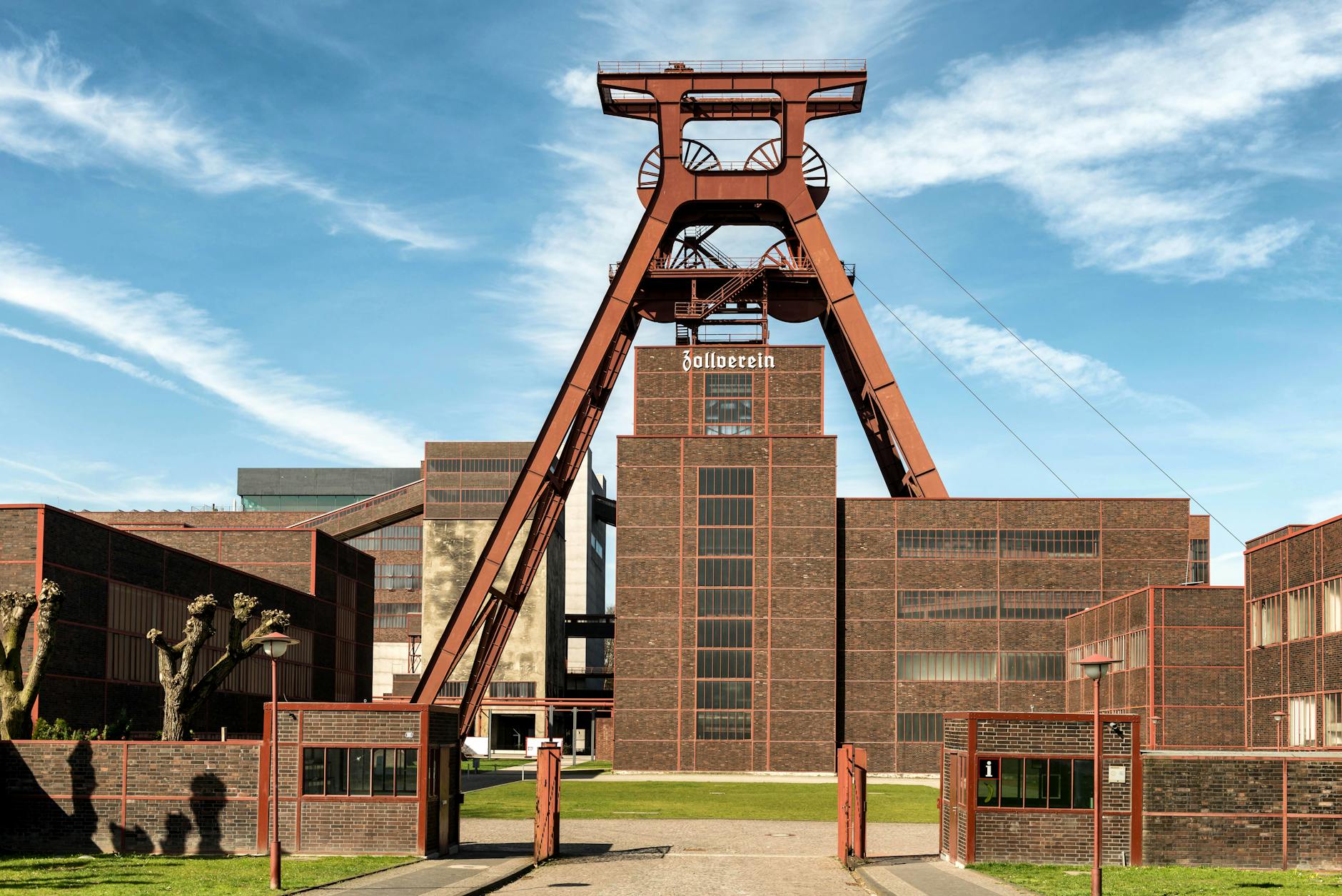The Russian invasion of Ukraine began on 24 February 2022. However, although the once-divided Ukrainian society gave Putin hope of a successful Blitzkrieg, the opposite happened. Ukrainians stood up to the aggressor with a stronger unity than ever before.
Once perceived societal divisions appeared to no longer play a role in providing a proper defense against the enemy. Unexpected solidarity from the West has further strengthened the shared bonds with Ukraine. Particularly the European Union, which many Ukrainians have been desiring to join, supported Ukraine and facilitated the admission of Ukrainians to EU countries by invoking the temporary protection directive.
The support of the European Union and its clear position regarding relations with Russia also increased the desire of many Ukrainians to finally join the EU. The start of the war and its subsequent course have certainly impacted national attachment and ties with the European Union – though it is not yet clear to what extent. National identity in Ukraine, despite its rich history, still needs to be fully constructed and has often been defined primarily in linguistic terms. Conflicts in the early history of independent Ukraine can often be explained by different historical identities in Ukrainian society. However, although the role of national identity became more important for Ukrainians after Euromaidan, the consequences of the absence of a shared national identity are still very present. In this context, a commonly understood and shared attachment of Ukrainians to their country is a crucial prerequisite for political stability and national security in Ukraine.
Data
We assume that the highly dynamic context of the Russian war of aggression against Ukraine influences the extent of Ukrainians‘ attachment to their country and the EU. Specifically, we examine how the extent of attachment to Ukraine and the EU has developed over the course of the war.
Our aim is not to draw normative conclusions from the changes in attachment but to map these changes and highlight the nuanced differences within their development.
For this purpose, we draw on data from the ReUP (Resettlement of Ukrainians Panel), which we collected in three waves between June 2022 and July/August 2023 (more information is available here) among Ukrainians aged 18 and above still living in Ukraine or who had fled the country. Our analyses are based on the responses of more than 1,700 people who participated in both wave one (June 22) and wave three (July/August 2023) and who had no missing values for the key variables. Respondents were asked how much they feel attached to Ukraine or the European Union on a 5-point rating scale from 1 “very strong” to 5 “not at all“.
Expectations
We examine how socialization (chronological generations), gender, and migration status influence individual attachment to Ukraine and the EU. These three influencing factors are, in turn, strongly related to the context of the war, be it through the possibility of being drafted into military service, being able to leave the country, or being affected by the war itself.
The European Union has provided financial and military support to strengthen Ukraine’s resilience and offered a safe haven for Ukrainian refugees. In general, we expect that these efforts have positively impacted Ukrainians’ attachment to the EU.
Concerning Ukraine, we assume that the attachment of all groups is declining. Its explanation lies in the fact that the patriotic feelings that were ramped up at the beginning of Russia’s invasion reached their limits at some point as the war dragged on without a clear result. Strong patriotic mobilization was needed at the beginning of the attack to strengthen cohesion in the country. The Ukrainian research organization „Rating“ Group has already recorded a solid increase in patriotic attitudes in the early stages of the war. We assume that the initially very strong patriotism is waning, which is reflected in a decline in attachment to Ukraine.
Group differences
Regarding their attachment to the EU, it is likely that Ukrainians who have fled the country compare the support and security they received from the EU to that of their home country. It is safe to assume that the comparison is in favor of the EU. Furthermore, younger generations should feel closer to EU countries through these efforts due to post-Soviet socialization and language advantages, while older generations show only a slight increase in comparison due to their socialization in the Soviet Union. In the case of men, we assume that they value the security of the EU more strongly due to their gender relevance to the war, as they are spared from going to war.
Based on the previous assumptions, we anticipate the following group differences concerning attachment to the EU:
- The attachment with the EU has increased more among Ukrainians living outside the country than among those who have remained in Ukraine;
- EU attachment has increased more among younger generations than older generations.
- This is especially the case for younger people who live outside Ukraine;
- EU attachment has increased more among men than among women.
- This is especially the case for men who live outside Ukraine.
Regarding attachment to Ukraine, we assume that the decline is less pronounced among people still in Ukraine. This is based on the consideration that the stability of Ukraine and the fighting spirit of the military depend heavily on the psychological support of the population. Therefore, people who have remained in the country can maintain a higher level of attachment to Ukraine due to their physical location and their role in maintaining stability and motivation.
We also expect differences in the changes both between the genders and between the age groups. We assume that the attachment of older generations is more unstable and, therefore, declining more strongly due to their socialization in the Soviet Union. In contrast, the younger generation’s attachment should decline less, as they were primarily socialized in Ukraine. Due to the direct danger of being mobilized and ending up in the war, we assume that attachment decreases more among men than among women, who are in relative safety from the direct effects of the war and have the opportunity to leave the country.
Based on the previous assumptions, we expect the following group differences in connection with attachment to Ukraine:
- The attachment with Ukraine has declined more among Ukrainians living in the EU than among those who have remained in Ukraine;
- Attachment with Ukraine has decreased more among younger generations than older generations.
- This is especially evident among younger people who live outside Ukraine;
- Attachment with Ukraine has declined more sharply among men than among women.
- This is especially evident among men who live outside Ukraine.
Results
First, we look at the change in attachment to the EU and Ukraine across the three panel waves in a trend analysis (see Figure 1). We only look at the aggregated mean values across the individual waves and not yet at intra-individual changes. We can observe a decline in attachment to Ukraine and an increase in attachment to the European Union in the aggregate across the three waves. Here, we find initial indications that the trend corresponds to our assumptions. However, this analysis can only show the changes across all respondents at different points in time.

Figure 1: Development of the mean attachment of survey participants with Ukraine and the EU across the three survey waves. The attachment item scales were recoded to represent attachment intensity for better visualization. On the Y-axis, the value 5 corresponds to a very strong attachment, while the value 1 represents a very weak attachment.
In a next step, we look at the intra-individual changes. This analysis is crucial due to the fact that only this approach can show how approval has changed at the individual level. For this purpose, we generate a change variable for each respondent, which contains the difference between the level of attachment in the first wave in June 2022 and the level of attachment in the third wave in July/August 2023. Positive values mean that attachment has increased over the year, and negative values mean that attachment has decreased.
Across all respondents (see Figure 2, right column „Total“), attachment to Ukraine has decreased slightly (-.23), and attachment to the EU has increased slightly (+.11). Among respondents who were no longer living in Ukraine in July/August 2023, we find a significantly more substantial decline in their attachment to Ukraine. At the same time, they showed a slightly more substantial increase in their attachment to the European Union. In this case, physical distance or being directly affected by the war may be explanatory factors for the decline in attachment to Ukraine and the increase in attachment to the EU, on the other hand.

Figure 2: Change in mean attachment between waves 1 and 3, depending on migration status. Only the differences in the change in attachment to Ukraine between the two migration status groups are statistically significant (p < .001).
Next, age groups are categorized based on socialization patterns (mainly in the Soviet Union, in the transition phase, after independence) (see Figure 3). It is striking that the development of attachment in the age groups between people who stayed in Ukraine and those who fled is precisely the opposite.
For the group of Ukrainians who stated that they were no longer residing in Ukraine at the time of wave 3, attachment to Ukraine decreased with increasing age. At the same time, however, attachment to the EU increased less with increasing age. We find the opposite trend among people who stayed in Ukraine after the start of the war. Here, attachment to Ukraine decreased less and less with increasing age, while attachment to the EU increased significantly more.
Older generations, due to language barriers, may struggle to make connections in host countries, leading to lower attachment to the EU. However, older Ukrainians, in particular, compare the material and immaterial support of the EU states with that of their own country (since they tend to be more dependent on them). Therefore, the result of this comparison should also lead to a more substantial decline in attachment to their country. For the group of Ukrainians who have remained in the country, both the question of connection and the comparison play no role. Here, the principal explanations for the changes could be dissatisfaction with the current situation and government, being affected by the consequences of the war, and fear of joining the army.

Figure 3: Changes in mean attachment between waves 1 and 3 across all age groups, based on resident status. All age group differences are not statistically significant, except for the attachment to the EU among those staying in Ukraine (p < 0.05).
The effects of the war also differ between the genders (see Figure 4). The decline in attachment to Ukraine is more substantial for male respondents than for non-male respondents, especially if they remain in the country. Being affected by mobilization, the dangers of war at the front, and the lack of opportunities to leave the country could have a more decisive influence on attachment than for non-male people.

Figure 4: Change in mean attachment between waves 1 and 3 based on gender, depending on resident status (female and non-binary individuals were combined into one category). Our results indicate statistically significant differences in attachment to Ukraine between non-male and male respondents still living in Ukraine (p < 0.05). No statistically significant differences were found for all other comparisons.
Conclusion
On the occasion of the Ukrainian national holiday „Day of Dignity and Freedom“ on the 21st of November 2023, Ukrainian President Volodymyr Zelenskyy emphasized in his speech the long-cherished desire of Ukrainians to become part of the European Union. Our findings suggest that the Russian war of aggression has further strengthened this orientation towards European identity.
On the other hand, the decrease in solidarity with Ukraine does not imply betrayal. Despite declining trends, Ukrainians‘ attachment to their own country remains incredibly high. Our results have crucial implications for post-war identity building in Ukraine’s civil society. The growing attachment to the EU needs to be complemented by a constructive post-war identity debate in order to rebuild Ukraine as a strong and cosmopolitan member of the EU.
Literature
Barrington, L. (2022). A New Look at Region, Language, Ethnicity and Civic National Identity in Ukraine. Europe-Asia Studies, 74(3), 360–381. https://doi.org/10.1080/09668136.2022.2032606
Himka, J.-P. (2015). The History behind the Regional Conflict in Ukraine. Kritika: Explorations in Russian and Eurasian History, 16(1), 129–136. https://doi.org/10.1353/kri.2015.0008
Kulyk, V. (2016). National Identity in Ukraine: Impact of Euromaidan and the War. Europe-Asia Studies, 68(4), 588–608. https://doi.org/10.1080/09668136.2016.1174980
Onuch, O., Hale, H. E., & Sasse, G. (2018). Studying identity in Ukraine. Post-Soviet Affairs, 34(2–3), 79–83. https://doi.org/10.1080/1060586X.2018.1451241
Rating Group. (2022a). The eighth national poll: Ukraine during the war (April 6, 2022). http://ratinggroup.ua/en/research/ukraine/vosmoy_obschenacionalnyy_opros_ukraina_v_usloviyah_voyny_6_aprelya_2022.html
Rating Group. (2022b). Thirteenth national survey: Foreign policy orientations (June 18-19, 2022). http://ratinggroup.ua/en/research/ukraine/trinadcatyy_obschenacionalnyy_opros_vneshnepoliticheskie_orientacii_18-19_iyunya_2022.html
Roccas, S., & Brewer, M. B. (2002). Social identity complexity. Personality and Social Psychology Review, 6(2), 88–106.
Tajfel, H., & Turner, J. C. (1979). An integrative theory of intergroup conflict. In W. G. Austin, & S. Worchel (Eds.), The social psychology of intergroup relations (pp. 33-37). Monterey, CA: Brooks/Cole.
Turner, J. C., Hogg, M. A., Oakes, P. J., Reicher, S. D., & Wetherell, M. S. (1987). Rediscovering the social group: A self-categorization theory. basil Blackwell.
Walter, L., Mayer, S. J., Dollmann, J., Jacobsen, J., & Meth, A. (2022). High levels of support for European Union accession in Ukraine during the war in 2022. An analysis based on the ReUP study. https://doi.org/10.31235/osf.io/zqn9j
Zelenskyy, V. (2023). Address by the President of Ukraine on the occasion of the Day of Dignity and Freedom. Official Website of the President of Ukraine. https://www.president.gov.ua/en/news/zvernennya-prezidenta-ukrayini-z-nagodi-dnya-gidnosti-ta-svo-87165








